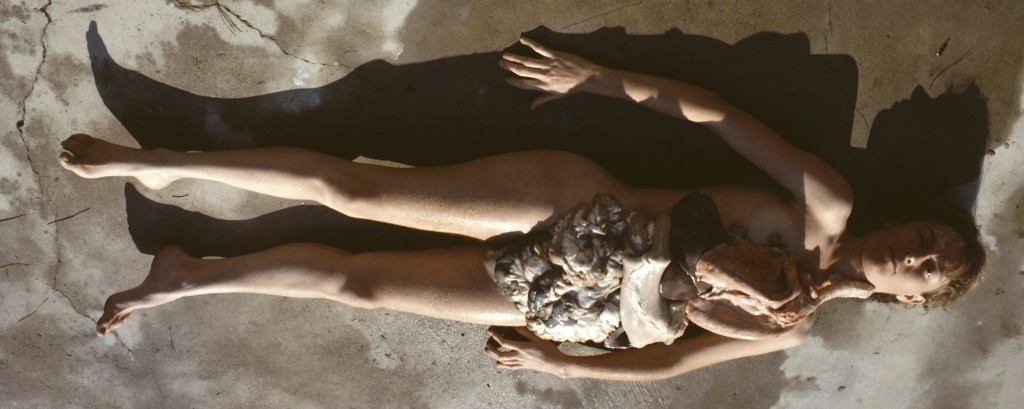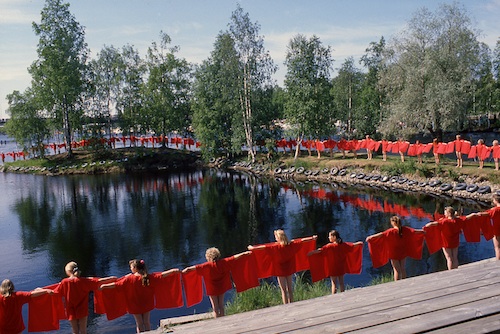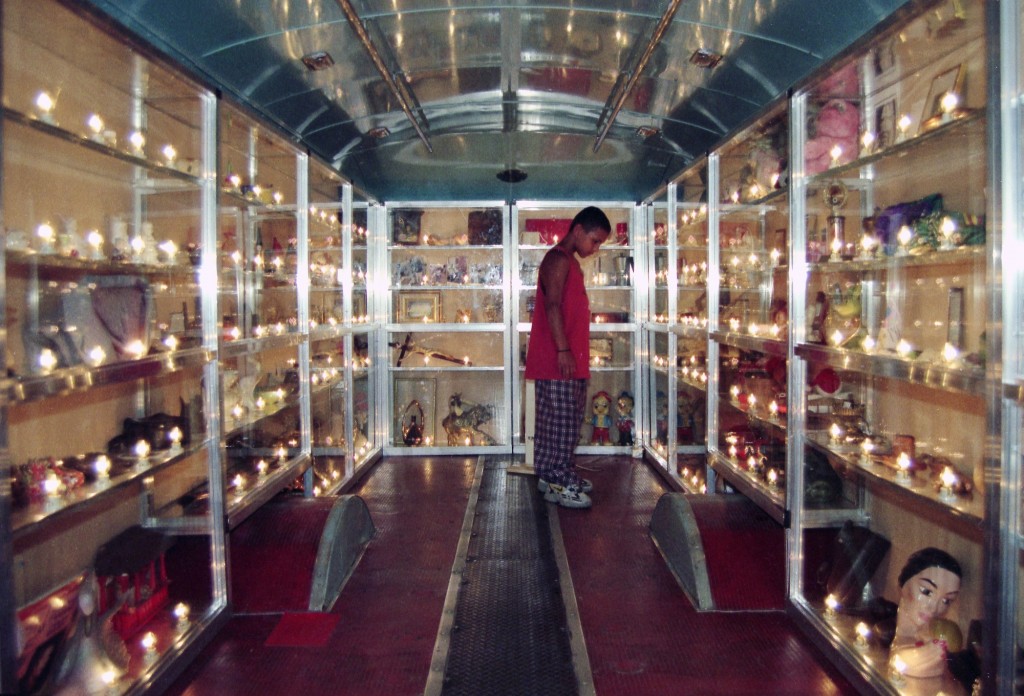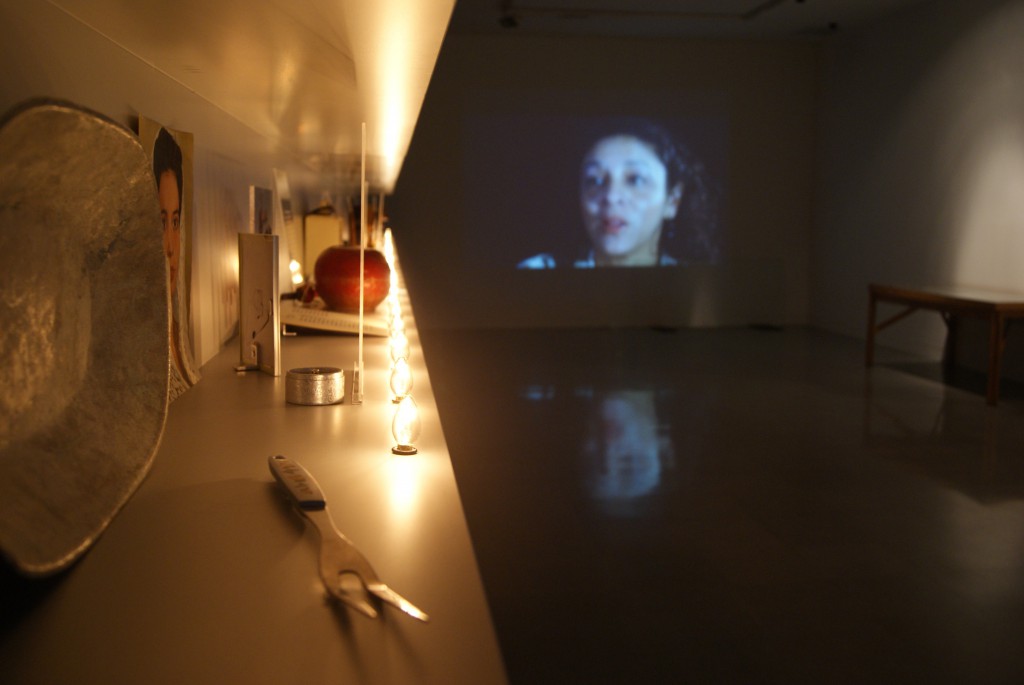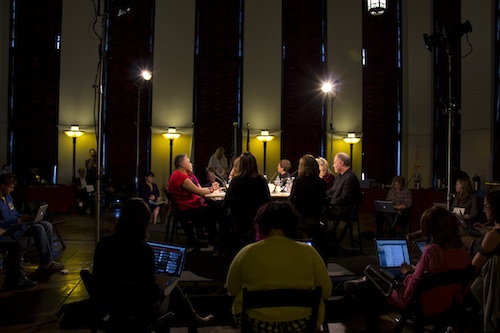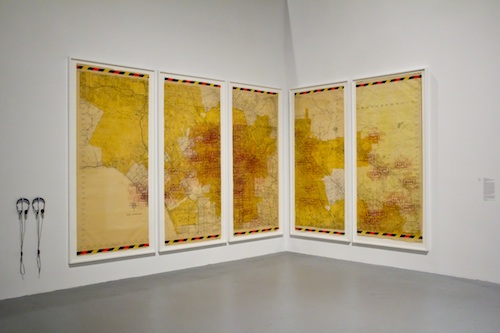Suzanne Lacy’s career as an artist, educator, and activist spans multiple decades and major movements in contemporary art history (Feminist Art, New Genre Public Art [a phrase coined by the artist], and, more recently, Social Practice). It offers one of the most important models we have of a practice that explores complex social dynamics and political issues while never losing site of art as a source of imagination and as a catalyst of change. Recent works by Paul Chan, Rick Lowe, and Tania Bruguera have gained much attention for their collaborations with embattled communities. In Chan’s case, New Orleans’ Ninth Ward post-Katrina (Waiting for Godot New Orleans); in Lowe’s, Houston’s lower-income, African-American Third Ward (Project Row Houses); in Bruguera’s, immigrant communities based in Corono, Queens (Immigration Movement International). Critics and champions of these works cite duration as one of their key elements, recognizing the potential value of working within communities over longer periods. Inasmuch as Lacy has consistently developed processes embedded within specific communities, one can see her as an important forerunner of contemporary artists who would use the art project as a means to extend processes of engagement, collaboration, and political critique. In the following post, Lacy discusses various projects in which duration has been a key to their success, not least of which is a recent collaboration with Knowle West Media Center, which looks to found a “University of Local Knowledge” in Bristol, UK. Another significant project is Beneath Land and Water: A Project for Elkhorn City, where Lacy and colleagues returned multiple times to a small Appalachian town to work with residents on developing tourist resources.
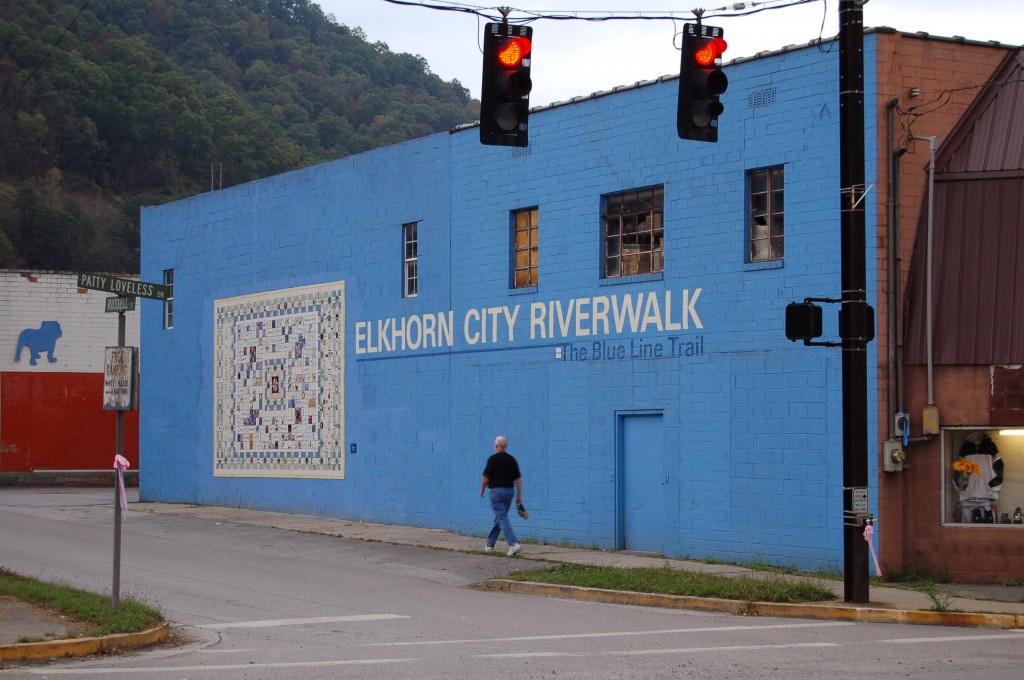
“Beneath Land and Water,” by Suzanne Lacy, Susan Steinman, and Yutaka Kobayashi. Photo by SL Steinman.
Reading Lacy’s Leaving Art, (2010), a collection of performance texts, essays, and statements spanning the artist’s career, I am struck by the necessity of these writings, how they were written out of a need to communicate with her contemporaries and reflect upon the development of her practice in relation to broader art historical questions. At the heart of her collection is a commitment to art as a life work striving to disalienate the personal and the political, autobiography and social life. She takes up such an ethos after Judy Chicago and Allan Kaprow, who acted as mentors early in her career, but also in relation to an ongoing awareness of the vulnerability of individuals living in communities marginalized economically and politically. Taking her own body as the site of this vulnerability in early works such Falling Apart (1976), in which one sees the artist naked and seemingly eviscerated in photographs, and the bodies of other women in works such as Three Weeks in May (1977; and again in Three Weeks in May, 2012), in which she tracks the frequency of rape in various Los Angeles neighborhoods, Lacy eventually moves towards less familiar territory: for instance, African-American teenagers from Oakland in The Roof is on Fire (1994, part of a ten year series); or Colombian families impacted by violence in The Skin of Memory/La Piel de la Memoria (1999, and revisited in 2011 ); or cancer patients in Cancer Notes: 7 Day Genesis (1991). Using conversation as her principal medium, and making aesthetic decisions based on both empathic responses and an awareness of complex social terrains, she acts principally as a communicator—one who can bring others together, if only to voice their differences and dissensus in transformative ways.
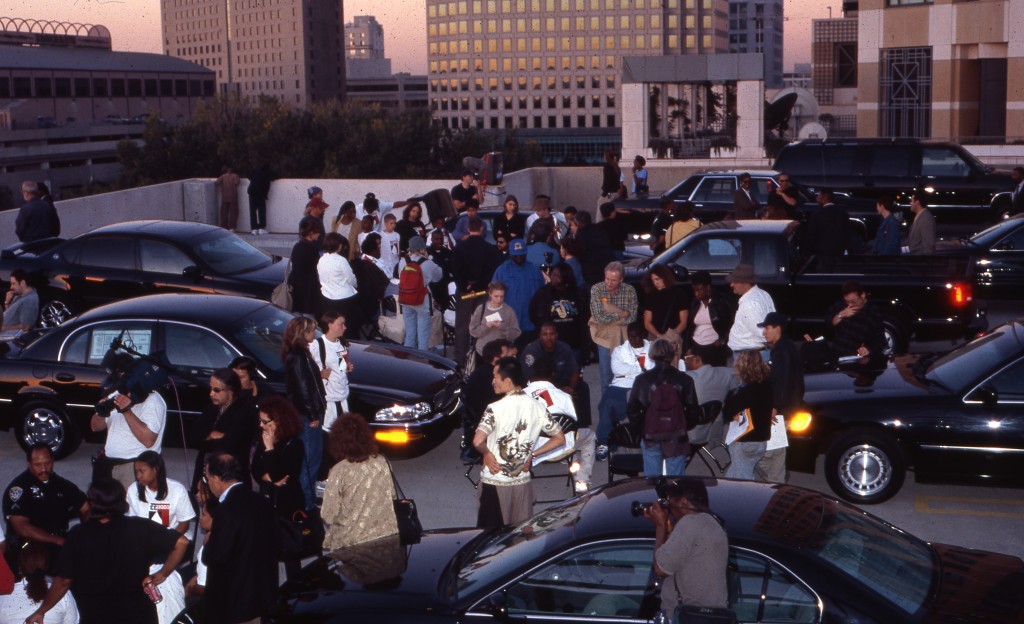
“Code 33: Emergency, Clear the Air,” by Suzanne Lacy, Unique Holland and Julio Morales. Courtesy Suzanne Lacy.
1. What is your background as an artist and how does this background inform and motivate your practice?
I arrived at CalArts during its first year in the Valencia campus. The feminist art, writing, and design programs dislodged me from my premedical education—the combination of politics (in this case feminism) with art was irresistible. Equity was always a big issue for me. As a teenager I sought out early pre-feminist texts along with writing on race and poverty. Fortunately, my family encouraged those interests. I was in college during the Vietnam War Protests, the Black Power Movement and the Farm Workers Strike.
At CalArts experimentation in form was not only acceptable but expected: an image didn’t necessarily have to result in a painting or sculpture but could become an action, performance, or gesture, documented with photography or video. In performance we could explore any number of ideas. Philosophy, psychology and sociology were important sources for work, but so were race riots and popular culture images.
These influences are evident in my choice of subject matter, but they have also influenced the forms in my work. I am interested in the “shape” of ideas, relationships, and social processes. I am not an expert in any art medium, although of course I have developed some expertise in performance and installation over the years. Many of us from that time are generalists. My interests reflect the specific moment I entered the art scene in Los Angeles, especially with respect to both the beginning of performance art and the rise of feminist and community-based art.
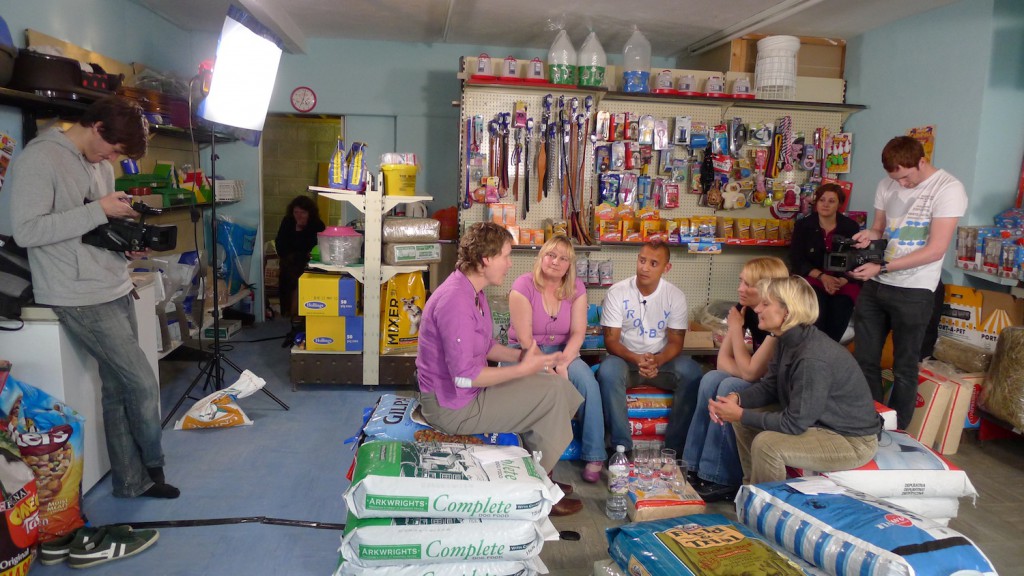
University of Local Knowledge Fur and Feathers performance. Suzanne Lacy with Penny Evans and Carolyn Hassan. Photo by Suzanne Lacy.
2. Do you feel there is a need for the work that you are doing given the larger field of visual art and the ways that aesthetic practices may be able to shape public space, civic responsibility, and political action? Why or why not?
There has to be some arena for those of us who are not siphoned off to work on behalf of capitalism. Social practice artists tend to be interested in new forms of production, ones that change with social and political situations. In a sense, we operate like other activists, although our attention to form is often quite different. Visual artists have inventive ways of seeing and addressing problems. On the local level we can raise issues and engage people in creative solutions.
Once we set up a situation where some form of transformation is an aspect of the work—symbolically or actually—by our own terms of engagement we have to address how and if change actually takes place. I am not sure how much direct effect we have outside the specific communities we work in. This has less to do with art and more with the scale of our resources—time, money, communication technology and so on.
One of our most important impacts is on the field. Today’s social “turn” in art was influenced by my generation but more artists today are aware of local and global issues and are informed by political and social theory. When I first began, we had to fight to be seen as artists. Now, even feminist concerns are common, although there is still work to be done to link feminist historical and political perspectives to social practices. The current focus is probably only a trend that will be replaced by other concerns, but now these ideas are so embedded that it will remain a viable way to work.
3. Are there other projects, people, and/or things that have inspired your work? Please describe.
Early influences in the arts were mentors like Judy Chicago, Arlene Raven, Sheila de Bretteville and Allan Kaprow. But I’ve always been more influenced by writers and activists. Most of my reading is outside the arts. I continue to learn from younger artists and colleagues, even from my students.
I’ve also been inspired by the people who work with me on projects. My life is formed around extended communities in long-term projects that include artists, activists and volunteers of any stripe. In the process of making the work there is a lot of discussion—analyzing problems, forming values, and sharing personal experiences. When you return to a place, like I did last week in Eastern Kentucky, researching a new project for Creative Time, relationships that had built up over five years between 2000-2005 were quickly reconstituted.
In Madrid in 2010, I worked on a project on violence against women with women who had been in the anti-violence movement for decades. Their lifelong commitment to this issue was deeply inspirational. But so are the teenagers I worked with in Oakland during the 90s, now adults, who managed to pull themselves out of poverty and create a life where they give back to their community. I am very fortunate to have experienced such a variety of relationships within and during the production of my work.
The practice of listening is so foundational to public practice that it’s almost a cliché. What we don’t talk about is how listening is, in fact, learning. That’s why I got into this kind of artwork. When I work on projects I listen carefully for both the learning as well as the images that form between us. I test the images out in conversation and eventually the shape of the work emerges. In the process, friendships form and I begin to see issues from both personal and political perspectives. If you work in the territory of oppression, you cannot avoid being radicalized by people’s experiences.
4. What have been your favorite projects to work on and why?
Each has its own pleasures. For instance, working with teenagers in Oakland during The Roof is on Fire—230 young people talking about their lives—was intensely satisfying because the youth were funny, engaging, poignantly honest and just beautiful as human beings. You could actually feel the same sense of discovery that I had gone through in the audience during the performance. On the other hand, working with both youth and cops in Code 33, five years later, was difficult—not because of the people, but because the issue was so contentious. It was a conflicted work about conflict. So The Roof is on Fire was more of a “favorite” in terms of the pleasure in the production, but Code 33 was a favorite in another way—it embraced opposition and discord within the very structure of the work.
Performances are difficult because they are sited in public, open to large audiences, and often on controversial subjects. They are high risk, imperfect, and ultimately improvisational. Mistakes happen. When they succeed, I am happy, but when they fail it can be traumatic. There are many valences to measure failure and success. Even that is a discovery process—what constitutes aesthetic success in any given work? I don’t think we have evaluative measures that reflect the complication of this kind of work. Certainly the perfection of a theatrical work in a controlled environment isn’t often achievable, though for me the pull toward formal elegance—I love Robert Wilson’s work—is always there, most often ruptured by the reality of working with hundreds of unrehearsed performers and an unpredictable audience.
5. What projects would you like to work on in the future? What directions do you imagine taking your work in?
It is a challenge to keep from repeating yourself. Developed skills and ways of perceiving can be limiting. While the issues I deal with may remain similar, learning new ways to shape the work is what keeps me engaged. I guess I don’t think that we can measure a work by the “originality” of the content; “discovery” is more relevant to journalism than art at this point. I don’t often recreate works, but when I do, as I did recently with Three Weeks in January (from a 1977 project, Three Weeks in May, on violence against women in Los Angeles) I have to develop reasons—in this case social media organizing strategies—to rethink a work.
Currently I’m thinking about problems that face us as social and political artists: our forms of representation and communication; the spectacle of visual production available to us; our relationship to the art market; how we define art audiences; the interplay between global and local; how economic collapse will effect art schools and colleges and therefore the politics of young artists.
One long-term project I’m working on is in Bristol. It explores what for me, as an American, has been an elusive theme—that of class. I was raised in a rural community in California in a working class family where art was a natural expression, but class was not really mentioned. I understood poverty, of course, as I was raised close to it, but I didn’t understand prejudice, shame, and lack of opportunity that goes along with class. That became much clearer when I spent time in Appalachia.
For over six years now I’ve been working with The Arnolfini Gallery and Penny Evans and Carolyn Hassan of the community-based Knowle West Media Center in Bristol to “map” local working class knowledge through the creation of a metaphoric university. Knowle West is a small community in Bristol that was founded during the great depression in the early 1930’s. Residents were relocated from run-down council estates to work in surrounding tobacco and bag factories. Eighty years later these factories were redeveloped into urban lofts, but nearby Knowle West residents continue to face unemployment, stereotyping, and limited access to higher education.
The University of Local Knowledge (ULK) began with the observation about the relationship of this community to the expectation of and opportunity for higher education. Few youth here actually get to college. In England as in the U.S., class is reinforced in the system of higher education.
We have recorded 1,000 video shorts, ranging from 30 seconds to 4 minutes each, that portray knowledge held by residents: rabbit hunting (animal husbandry), raising children as a teen mom (adolescent psychology), growing organic vegetables (agriculture studies) and how to maintain classic cars (mechanical engineering). We’ve called these bits of local knowledge “texts” and placed them into categories, or “courses” through extensive discourse with community residents. The University of Bristol has compiled these into a website that will be changed by community residents in our upcoming “academic year,” during which the local community is brought online and participates in re-configuring the “university” in their own terms and according to their own categories.
Now the interesting thing for me in this project is how to present the work as “art” – how to talk about it, whether or not to create performances (staged conversations), should it live as exhibition or text, and so on. I know that what intrigues me has to do with definitions of art and effectiveness: the scale in terms of the size of the community; the duration; the choreography of various partnership agendas; the results in terms of resident sense of pride and relationship to the notion of University attendance, etc. But I am not sure what “shape” this will take as “art.” I’m still looking for it – I guess that is the pleasure in this kind of making.

